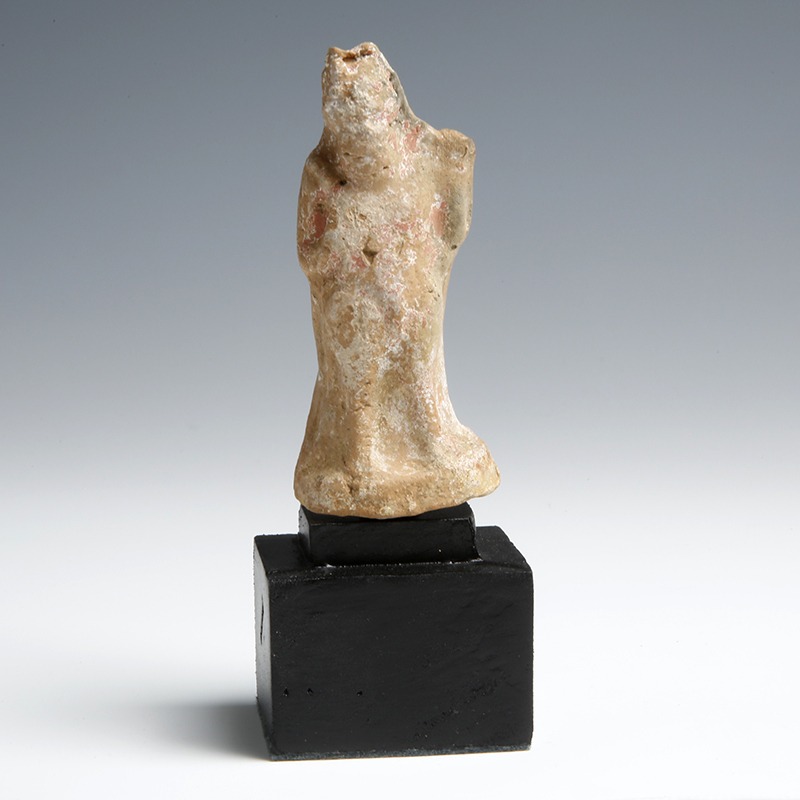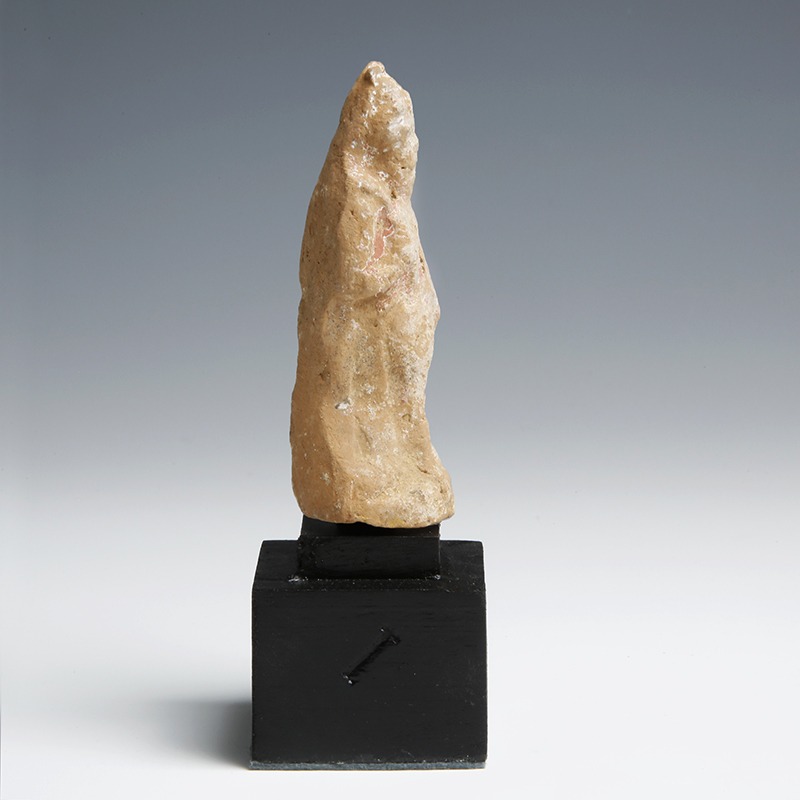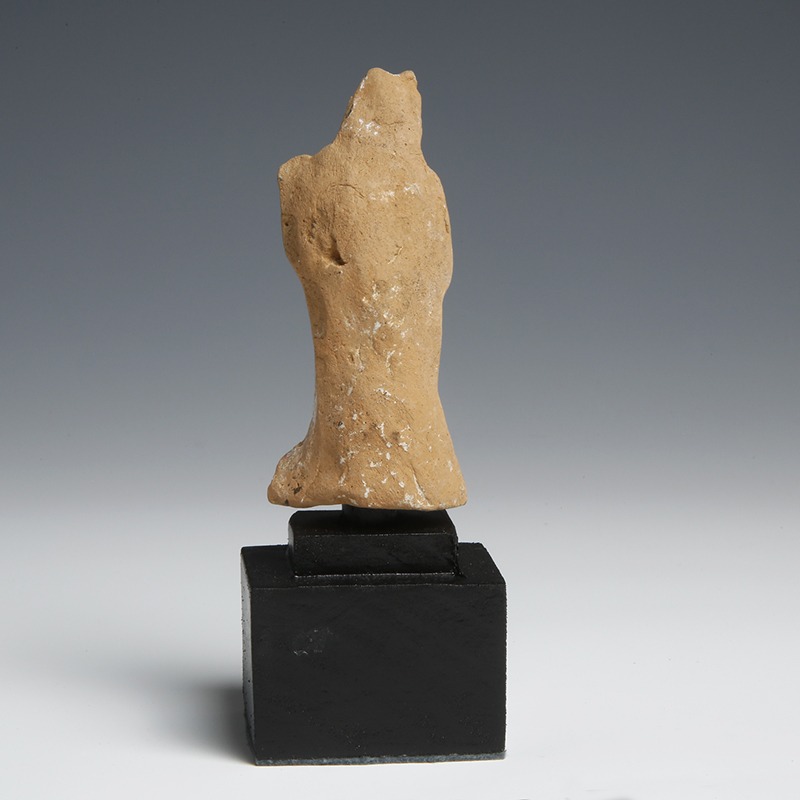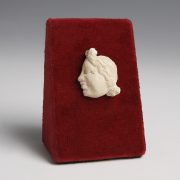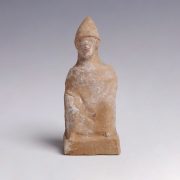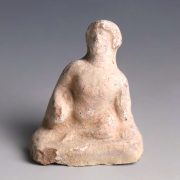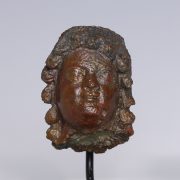From the 4th Century BC, figurines acquired a decorative function, rather than a votive or honorific one. They began to represent theatrical characters, such as the slave, the peasant, the nurse, the fat woman, or the satyr from the satyr play. Figurine features might be caricatured or distorted, and by the Hellenistic era, the figurines had become grotesques: deformed beings with disproportionate heads, sagging breasts or prominent bellies, hunchbacks, and bald men.
In the Athenian tradition of drama, there was not only comedy and tragedy, but a third genre – the satyr play (satyrs being the deities of the woods and mountains in Greek mythology). The satyr play would deal with the legends of gods and heroes, and boast a chorus composed of satyrs and sileni. The satyr genre would cleverly ridicule the mythic tradition with pantomime and mockery – the ancestor of our own satirical comedy today. Only one complete satyr play remains from the 5th Century BC – the Cyclops of Euripides.
